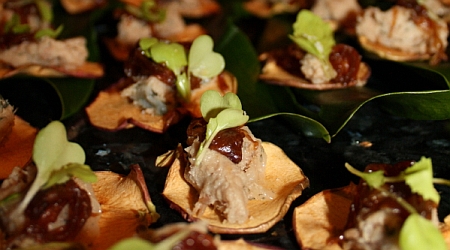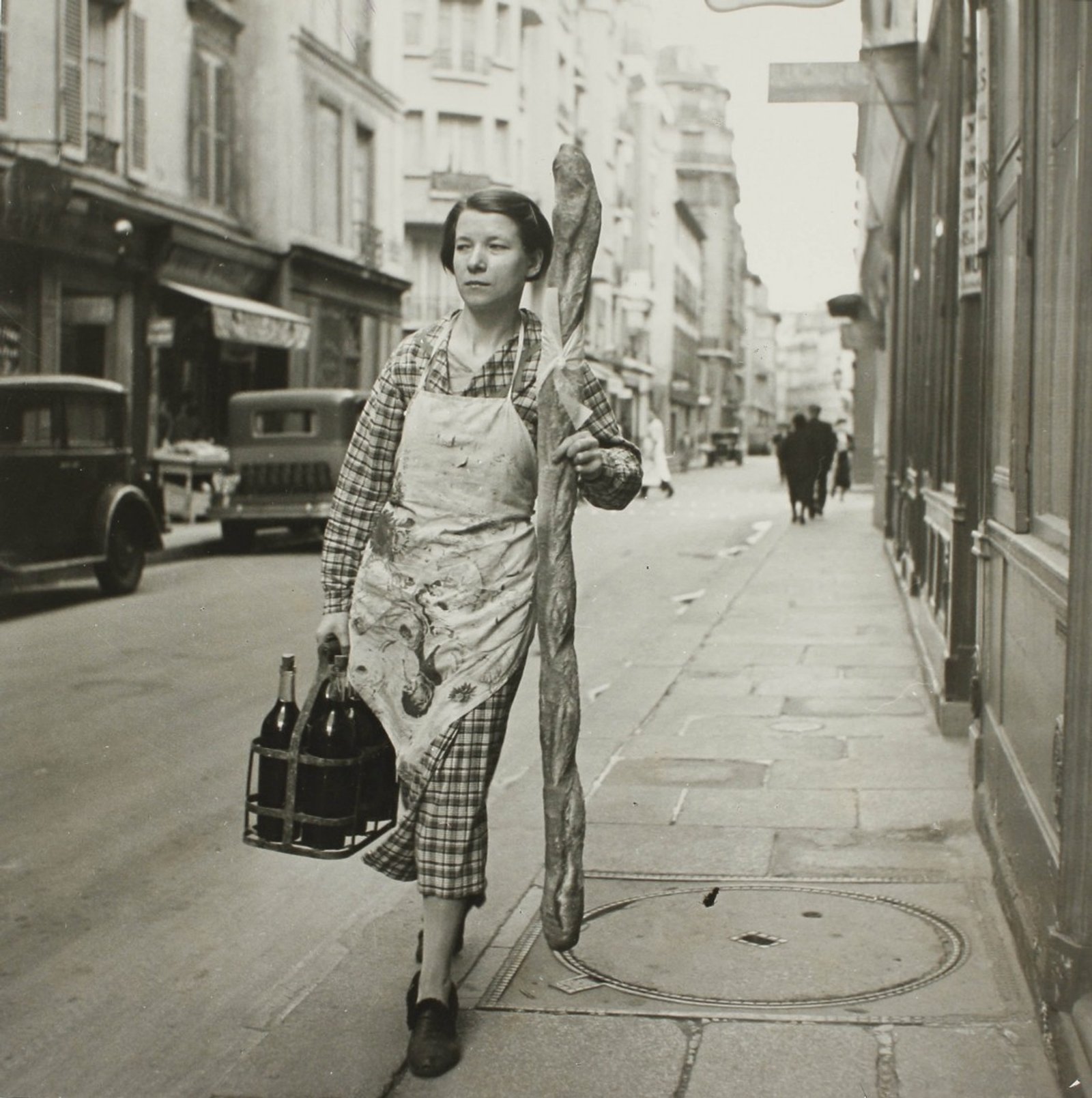by Jane Rodmell for All The Best Fine Foods, a ‘Certified Good Food Fighter’
Boudin blancs et noirs, andouilles, galantines, crépinettes…many of these made-in-house items of charcuterie are all the buzz these days on the menus of the city’s finest chefs.
Charcuterie literally means cooked meat, from the French chair cuit. It has its roots in 15th century French country cooking, being a traditional means of preserving all kinds of meat, predominately pork, but also including rabbit, duck, goose and other meats and poultry.
At All The Best our Exec Chef, Olivia Bolano, is trained in classical French cuisine and passionate about all parts of the pig! Last Tuesday, as our contribution to Willow Breast Cancer Support Canada’s 15th anniversary fundraising event ‘Eat to the Beat’, Olivia made an awesome pork rillette, served on crisp dried apple slices and topped with our own Caramelized Onion Confit. (See photo above.) It was a hit!
To make the rillette, we slowly braise the pork with bones and seasonings, and, when the meat is meltingly tender, we shred and pound it together with just enough pork and duck fat to make the classic fibrous paste –a delicious addition to a charcuterie platter and the basis of many a tasty party snack. All The Best Pork Rillette is available for sale at our retail store, as well as Chef Olivia’s Duck Rillette, Duck Terrine, Duck Confit and House Pâté.
Duck Confit
A brilliant way to deal with duck legs and excess duck fat! Use the tasty meat in salads, pasta sauces and soups and with beans (as in the traditional cassoulet). Be sure to save any excess duck fat…it adds a whole new dimension to French fries.
6 duck legs
6 tbsp (90 ml) kosher salt
6 tbsp (90ml) brown sugar
3 cloves garlic, sliced
6 bay leaves
2 tbsp (30 ml) coarsely chopped thyme
6 black peppercorns, crushed
4 whole cloves, crushed
4 cups (1L) rendered duck fat
Rub duck legs all over with salt and brown sugar and place in a non-reactive dish (glass or ceramic). Press garlic, bay leaves, thyme, peppercorns and cloves into the surface of each leg. Cover and refrigerate overnight.
Preheat oven to 200° F (100° C).
Rinse duck legs under cold water to remove all seasonings and pat dry. Set aside.
Melt duck fat slowly in a Dutch oven over medium-low heat and arrange duck legs in the pot so that they are completely covered by the melted fat. Place in preheated oven and bake until legs are very tender and have settled in the bottom of the pot, about 6 hours.
Remove from oven and let cool to room temperature. Store in refrigerator, covered in fat, for up to a month.
PS. Watch for new charcuterie items from All The Best’s kitchen in the coming season.
Enjoy and all the best,
Jane








